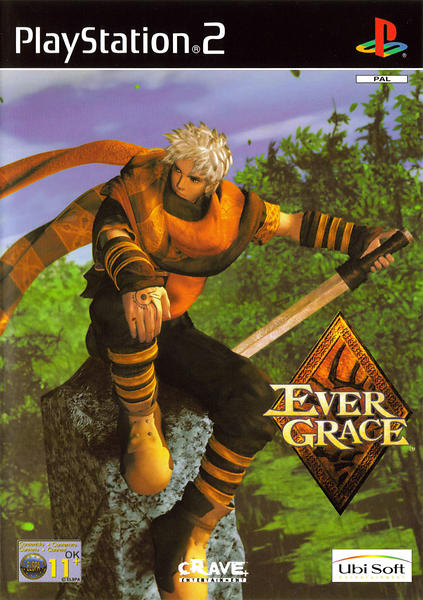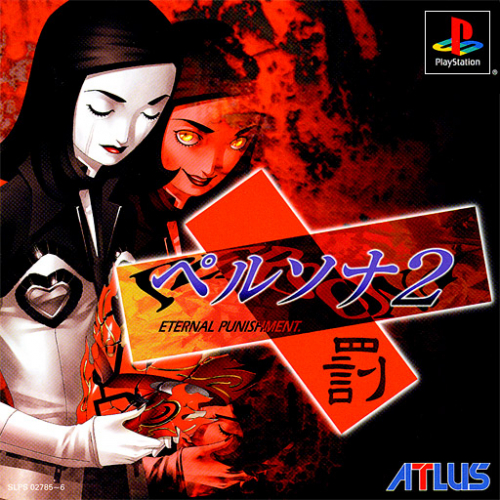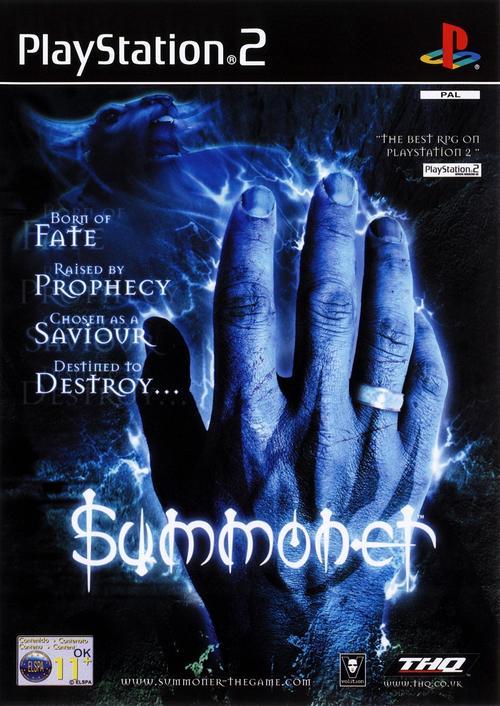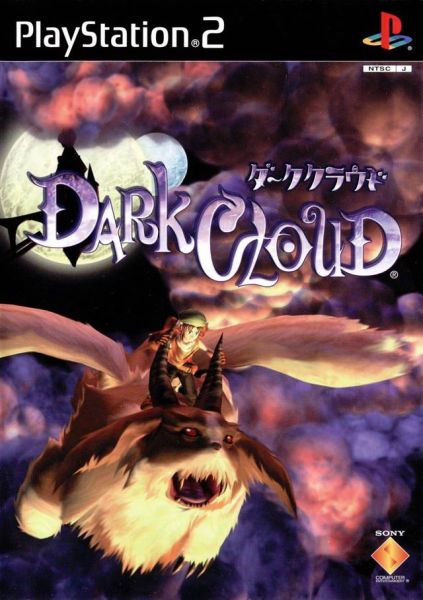Game No. 128
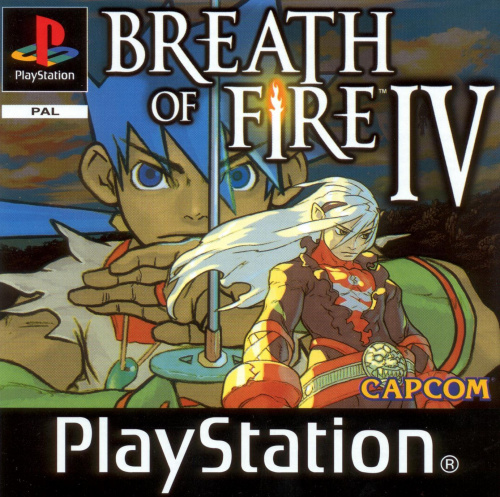
Title: Breath of Fire IV
Developer: Capcom
Platform: PlayStation
Release Date: April 27, 2000 (Japan)
Comment: A prequel to the previous installments in the series, Breath of Fire IV, although not as commercially successful as III, appears to have garnered a markedly more positive critical reception over time than its immediate predecessor. However, certain plot elements were subjected to censorship prior to the international release outside of Japan. The cut content included a decapitation, a number of scenes that were perceived to contain sexual implications, and manifestations of alcoholism in one of the party members were instead depicted as symptoms of a speech impediment.
Taking place an undisclosed number of years before the first game, the plot relates the tale of two war-torn continents. At the beginning of the game proper, Nina, princess of the Kingdom of Wyndia, and Cray, leader of the Woren clan are out searching for Elina, Nina's older sister and an envoy dispatched on a diplomatic mission, who's been missing for some time. Traveling by aircraft, they are attacked by a dragon, causing them to crash. While Cray guards their flier, Nina sets out for the nearby town of Sarai to look for spare parts. Before reaching the town, she stumbles upon a crater wherein she is confronted by a dragon. Before either have time to act, the dragon transforms into a human man. Remembering nothing but his name, Ryu, he is persuaded by Nina to lend his aid in finding her sister. Meanwhile, Fou-lu, former ruler of the western continent and a divine being who constitutes one half of a deity called Yorae who was summoned by mortals in ancient times, has reawakened after more than six centuries of slumber. Although his powers are weakened by his long dormancy, he is still intent on regaining his position as emperor of the Western Fou Empire, and on reclaiming his godhood by finding his counterpart somewhere in the realms.
Once again, the game is presented from a rotatable isometric projection perspective, although it cannot be tilted this time around. Character models are yet again rendered using two-dimensional sprites while environments are presented in three-dimensional graphics. Most gameplay staples of the franchise are apparently still present, but many have undergone overhauls, and others are completely new to the series. First off, the Dragon Gene System has been scrapped. Instead, there are a number of dragon forms one can transform into that are unlocked progressively as one advances through the main quest. Some of these forms can be upgraded, but as the player character rise through experience levels and upgrade said forms, they require an increasingly high amount of ability points to summon and maintain. The Master system introduced in the previous entry has been retained, but abilities are now learned by fulfilling certain criteria rather than attaining a predetermined experience level. Once more, players may engage in the construction of a fairy village and thereby gain access to further benefits of various kinds, but players must apparently devote themselves to an increased amount of micro management in order to reap the rewards. The series' signature fishing feature returns and certain sources I've perused would indicate that the learning curve of this particular facet of gameplay has been increased sharply due to more technically demanding mechanics. The battle system has been revised with two major additions and one (unconfirmed) jettison. To begin with, a combo system has been integrated into combat. If a player manages to pull off certain abilities or spells in a specific predefined order, they will unleash attacks more potent than standard ones or grant their team members other beneficial effects. Also introduced is a new "back row" mechanic. Essentially working as a reserve pool, this feature allows one to switch party members in and out of battles at will. While unable to contribute to fights directly, characters placed in the back row will regain hit points and mana each round. Finally, I've found no references to the Examine command introduced in III, and I will therefore assume it has been discarded.
The PlayStation version of Breath of Fire IV mustered just over half the sales of those of its immediate predecessor, peaking at roughly 550,000 copies sold. On the other hand, professional reviews appear decidedly more favourable when compared to those of III. Having said that, I ought to emphasize that the greater majority of those I've found are of the retrospective variety. There seems to be a wide consensus among critics that, in terms of gameplay, the game offers nothing that hasn't been done before. But at the same time, they frequently maintain that what it has to offer is impeccably executed. Yoshino Aoki's soundtrack appears to be the most recurrently praised feature, but the audio department as a whole has received positive remarks. Furthermore, the revisions made to the battle system seem to have been met with approval. Yet, reviewers' sentiments towards the graphics appears to range from indifference to outright dissatisfaction, and the rotatable camera might very well be the most repeatedly criticized feature of the game. Lastly, while writers for various publications seem to agree that the title has ample amounts of content to offer, some has argued that it lacks incentives for multiple playthroughs.

Title: Breath of Fire IV
Developer: Capcom
Platform: PlayStation
Release Date: April 27, 2000 (Japan)
Comment: A prequel to the previous installments in the series, Breath of Fire IV, although not as commercially successful as III, appears to have garnered a markedly more positive critical reception over time than its immediate predecessor. However, certain plot elements were subjected to censorship prior to the international release outside of Japan. The cut content included a decapitation, a number of scenes that were perceived to contain sexual implications, and manifestations of alcoholism in one of the party members were instead depicted as symptoms of a speech impediment.
Taking place an undisclosed number of years before the first game, the plot relates the tale of two war-torn continents. At the beginning of the game proper, Nina, princess of the Kingdom of Wyndia, and Cray, leader of the Woren clan are out searching for Elina, Nina's older sister and an envoy dispatched on a diplomatic mission, who's been missing for some time. Traveling by aircraft, they are attacked by a dragon, causing them to crash. While Cray guards their flier, Nina sets out for the nearby town of Sarai to look for spare parts. Before reaching the town, she stumbles upon a crater wherein she is confronted by a dragon. Before either have time to act, the dragon transforms into a human man. Remembering nothing but his name, Ryu, he is persuaded by Nina to lend his aid in finding her sister. Meanwhile, Fou-lu, former ruler of the western continent and a divine being who constitutes one half of a deity called Yorae who was summoned by mortals in ancient times, has reawakened after more than six centuries of slumber. Although his powers are weakened by his long dormancy, he is still intent on regaining his position as emperor of the Western Fou Empire, and on reclaiming his godhood by finding his counterpart somewhere in the realms.
Once again, the game is presented from a rotatable isometric projection perspective, although it cannot be tilted this time around. Character models are yet again rendered using two-dimensional sprites while environments are presented in three-dimensional graphics. Most gameplay staples of the franchise are apparently still present, but many have undergone overhauls, and others are completely new to the series. First off, the Dragon Gene System has been scrapped. Instead, there are a number of dragon forms one can transform into that are unlocked progressively as one advances through the main quest. Some of these forms can be upgraded, but as the player character rise through experience levels and upgrade said forms, they require an increasingly high amount of ability points to summon and maintain. The Master system introduced in the previous entry has been retained, but abilities are now learned by fulfilling certain criteria rather than attaining a predetermined experience level. Once more, players may engage in the construction of a fairy village and thereby gain access to further benefits of various kinds, but players must apparently devote themselves to an increased amount of micro management in order to reap the rewards. The series' signature fishing feature returns and certain sources I've perused would indicate that the learning curve of this particular facet of gameplay has been increased sharply due to more technically demanding mechanics. The battle system has been revised with two major additions and one (unconfirmed) jettison. To begin with, a combo system has been integrated into combat. If a player manages to pull off certain abilities or spells in a specific predefined order, they will unleash attacks more potent than standard ones or grant their team members other beneficial effects. Also introduced is a new "back row" mechanic. Essentially working as a reserve pool, this feature allows one to switch party members in and out of battles at will. While unable to contribute to fights directly, characters placed in the back row will regain hit points and mana each round. Finally, I've found no references to the Examine command introduced in III, and I will therefore assume it has been discarded.
The PlayStation version of Breath of Fire IV mustered just over half the sales of those of its immediate predecessor, peaking at roughly 550,000 copies sold. On the other hand, professional reviews appear decidedly more favourable when compared to those of III. Having said that, I ought to emphasize that the greater majority of those I've found are of the retrospective variety. There seems to be a wide consensus among critics that, in terms of gameplay, the game offers nothing that hasn't been done before. But at the same time, they frequently maintain that what it has to offer is impeccably executed. Yoshino Aoki's soundtrack appears to be the most recurrently praised feature, but the audio department as a whole has received positive remarks. Furthermore, the revisions made to the battle system seem to have been met with approval. Yet, reviewers' sentiments towards the graphics appears to range from indifference to outright dissatisfaction, and the rotatable camera might very well be the most repeatedly criticized feature of the game. Lastly, while writers for various publications seem to agree that the title has ample amounts of content to offer, some has argued that it lacks incentives for multiple playthroughs.

